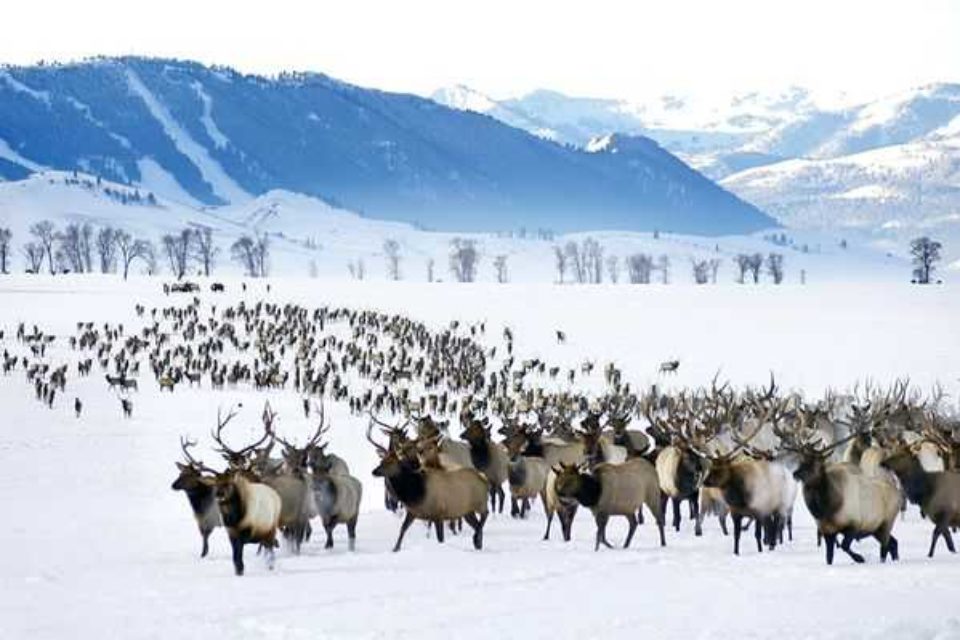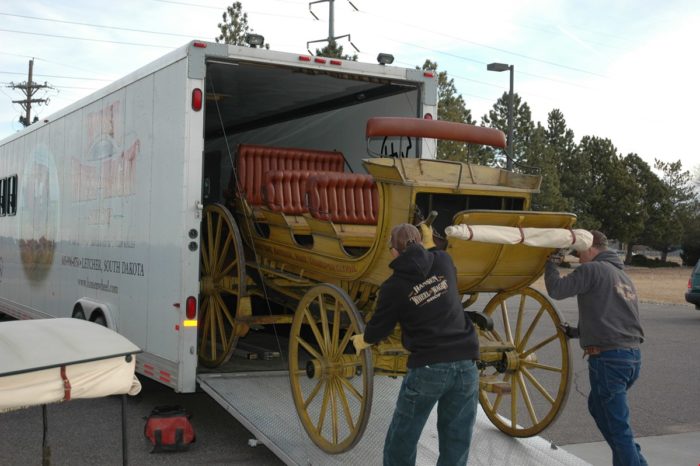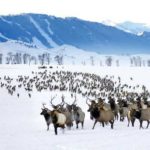Supplemental feeding to end on the Refuge

JACKSON HOLE, WYO – The US Fish and Wildlife Service announced today that it will end supplemental feeding on the Elk Refuge Thursday, March 23. This year’s feeding season began on January 7, approximately 2½ weeks earlier than average. This earlier feed date was due in part to heavier snow depth and density than is typically seen in early January.
Approximately 8,900 elk, or roughly 80 percent of the Jackson elk herd, wintered on the Refuge this season. It’s the highest number of elk wintering on the Refuge since 1997.
The earlier start to feeding, as well as the higher numbers of wintering elk, have wildlife managers concerned about the possible presence and transmission of disease. Septicemic pasteurellosis and foot rot are two common diseases that can spread across a herd in these conditions.
To help prevent these diseases, wildlife managers strive to provide alfalfa pellets on the cleanest, driest ground within the supplemental feeding areas on the Refuge.
As standing forage again becomes readily available and enough spring green-up occurs to support the number of elk present on the Refuge, supplemental feeding is typically scaled back and then terminated for the year. These activities encourage elk to spread out and feed on clean ground adjacent to the feed grounds, reducing the risk of disease.
After carefully evaluating available standing forage as well as elk and bison movements, wildlife managers have determined that supplemental feeding is no longer needed for the year.
March 23 is not the earliest feeding has ended on the Refuge, but it’s close. March 20 is the earliest feeding cutoff Refuge authorities can recall in the past two decades.


